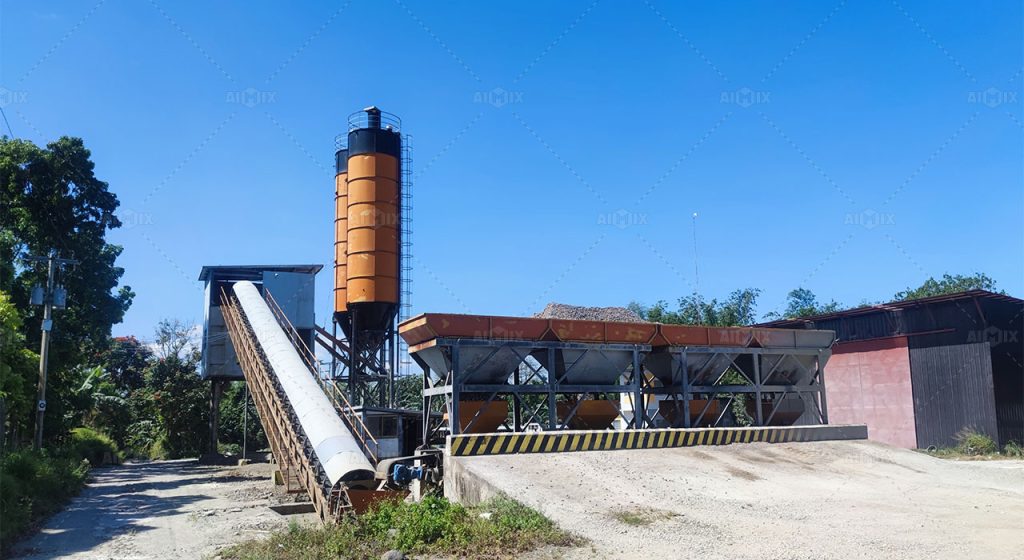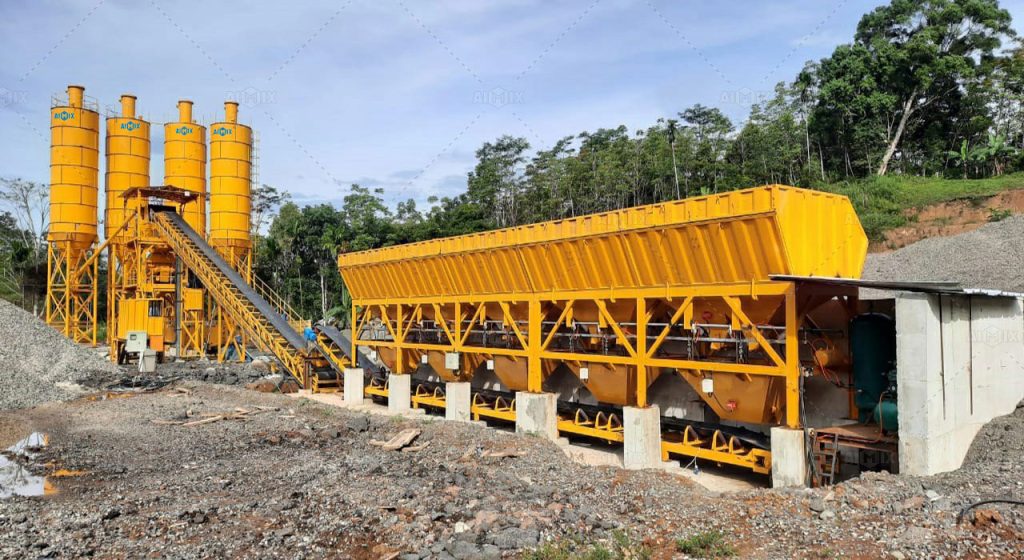In the realm of construction, efficiency and precision are paramount, and the strategic positioning of batching plants emerges as a key factor in achieving these objectives. Batching plants, often considered the nerve center of concrete production, play a strategic role in optimizing construction operations.
Centralized Concrete Production:
Batching plants serve as centralized hubs for concrete production, strategically positioned to efficiently cater to construction sites. By locating these batching plants for sale in proximity to construction projects, the transportation of ready-mix concrete to the site is minimized. This centralized approach reduces transportation costs, energy consumption, and potential delays, fostering a more streamlined and resource-efficient construction process.

Minimizing Concrete Delivery Time:
The strategic positioning of batching plants directly impacts the time it takes for concrete to reach the construction site. Placing batching plants strategically ensures that the distance traveled by concrete mixers is minimized. This reduction in travel time translates to faster and more reliable concrete delivery, contributing to the overall speed and efficiency of construction operations. Time-sensitive projects particularly benefit from this strategic placement.
Adaptability to Project Scale:
Batching plants are strategically positioned based on the scale and requirements of construction projects. For large-scale developments, such as high-rise buildings or infrastructure projects, strategically locating batching plants on-site or nearby allows for a continuous and efficient supply of concrete. Conversely, for smaller projects, mobile batching plants can be strategically moved to various locations to meet the specific demands of each phase of construction.
Reduction in Environmental Impact:
The strategic positioning of batching plants also addresses environmental considerations. By minimizing the distance traveled by concrete mixers, the carbon footprint associated with transportation is reduced. This aligns with sustainable construction practices and reflects a conscious effort to lower the environmental impact of construction operations. The strategic placement of batching plants contributes to a more eco-friendly and responsible approach to concrete production.
Resource Optimization:
Strategic positioning is not only about geographical location but also about optimizing the use of resources within the batching plant itself. Efficient layouts and well-designed processes ensure that raw materials, such as aggregates, cement, and water, are utilized optimally. The strategic arrangement of equipment within the plant minimizes waste and maximizes the efficiency of the concrete production process, contributing to resource conservation.
Flexibility in Project Management:
Batching plants strategically positioned offers greater flexibility in project management. Construction projects often involve multiple phases with varying concrete requirements. The ability to strategically move or adjust the location of batching plants provides project managers with the flexibility to adapt to changing needs. This adaptability is crucial in ensuring that the right amount of concrete is delivered at the right time, optimizing project timelines.
Enhanced Quality Control:
The strategic positioning of batching plants contributes to enhanced quality control in concrete production. By having portable concrete batch plants strategically located near construction sites, operators can closely monitor and control the entire production process. This proximity allows for real-time adjustments to the mix design, ensuring that the concrete meets the specified quality standards. Strategic positioning enhances the ability to address any issues promptly, maintaining consistent quality throughout the project.
Mitigation of Site Constraints:
Construction sites often present challenges such as limited space and restricted access. The strategic positioning of batching plants takes these constraints into account. Mobile batching plants, for example, can be positioned in tight spaces or moved as needed to overcome site-specific challenges. This adaptability ensures that batching plants can effectively operate in diverse environments, contributing to project success even in constrained locations.
Improved Project Cost Efficiency:
The strategic positioning of batching plants aligns to optimize project costs. By minimizing transportation expenses, reducing waste, and enhancing overall efficiency, the cost-effectiveness of construction projects is improved. Efficient batching plant operations directly contribute to the economic viability of construction endeavors, making strategic placement a key consideration in project planning.
Operational Continuity and Reliability:
The strategic positioning of batching plants enhances operational continuity and reliability. By strategically locating plants in regions with reliable access to utilities and transportation infrastructure, the risk of disruptions is minimized. This strategic foresight ensures a continuous and reliable supply of concrete, allowing construction projects to progress smoothly and according to schedule.
Conclusion:
In conclusion, the strategic positioning of batching plants is a fundamental element in optimizing construction operations. From minimizing concrete delivery time to enhancing quality control and mitigating site constraints, the strategic placement of concrete batching plant in malaysia impacts various facets of construction projects. As the construction industry continues to evolve, recognizing the importance of strategic positioning in concrete production becomes essential for achieving efficiency, sustainability, and success in construction endeavors.
